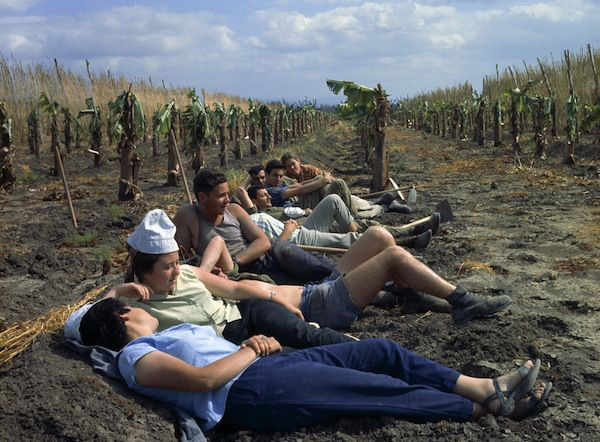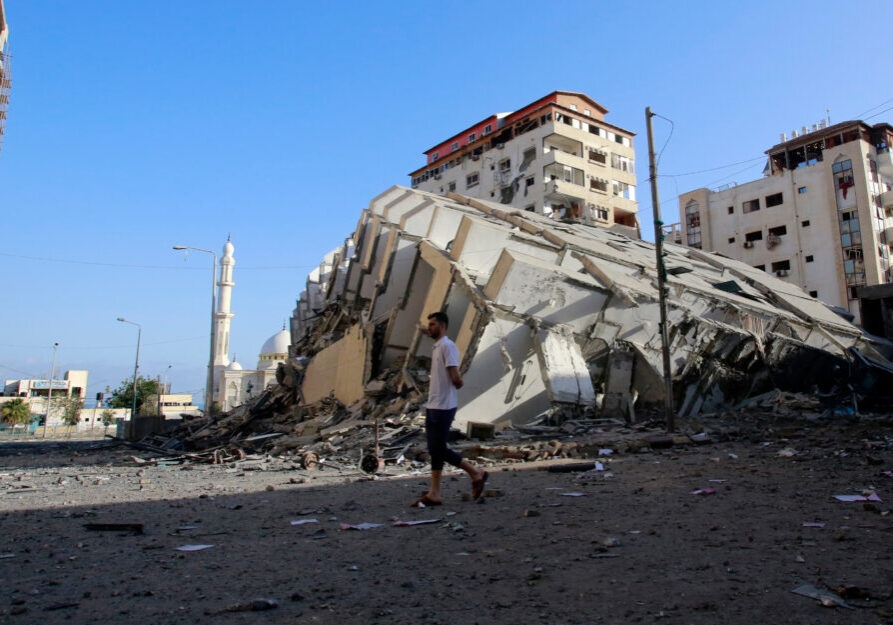Australia/Israel Review
Biblio File: Days of Future Past
Jan 12, 2018 | Liam Hoare

We were the Future: A Memoir of the Kibbutz
Yael Neeman, Duckworth Overlook, 2017, pp.256, $33.95
Of all the aspects and institutions of kibbutz life, the children’s house is one that in particular continues to fascinate. The idea of collective child-rearing was to some extent born out of necessity. Not only did it conserve resources in an era of scarcity (both before and after Israel’s founding) but also, at times, the children’s house was the only building made of concrete in an environment of tents and wooden huts, enemy bullets and jackals’ howls.
There was also an ideological component to collective child-rearing. Only by taking apart the nuclear family, an institution of bourgeois capitalistic society, and removing children from the clutches of their parents, could a new kibbutz man be created: more just, more egalitarian. In theory, it also liberated women, who bore the burden of raising children, granting them the freedom to work. (In practice, however, a woman’s work on the kibbutz was often confined to the kitchen, laundry, and indeed children’s house.)
Yael Neeman was a child of the kibbutz. Born in 1960 on Yehiam, a Marxist Zionist Hashomer Hatzair (secular Jewish youth movement) kibbutz in the Upper Galilee, she was part of the final generation to experience the children’s house. In her new memoir We Were the Future, she recalls these hinge years in her own life and that of the kibbutz movement with tremendous lucidity, playing the historical off against the personal, with a prose style (nimbly captured in translation by Sondra Silverston) that is straightforward when needs be and almost dreamlike when it takes flight. “We were so close to each other, all day and all night,” she writes. “Yet we knew nothing about ourselves.”
“We were always telling ourselves our story,” Neeman writes, opting for the plural over the singular pronoun. “We spoke in the plural. That’s how we were born, that’s how we grew up, forever. Our horizons were strange, bent.” At times, Neeman makes the kibbutz and the children’s house sound idyllic. “We greeted each new day with eagerness and curiosity. We were wide awake in the morning and wide awake at night. We skipped and ran from place to place, our hands sticky with pine tree resin and fig milk.”
Yet Neeman always hints at something much darker. Adults and children “lived in parallel universes,” Neeman writes. The children lived, learnt, and worked in unison, beginning in the second grade. They got up together, bathed together, and slept together, breeding disagreements and uncomfortable relationships between boys and girls, especially during puberty. At the age of 12, they moved from the kibbutz to a regional experimental Hashomer Hatzair educational institution, where “we were suddenly afraid that life had no meaning.”
Collectivised child-rearing managed to be idealistic and free-spirited within a very rigid, conformist structure. The carers in the children’s house sometimes forced kids to eat, dug their nails into their arms, or shook them. Children diagnosed with “special problems” were shipped off the kibbutz and sent to a psychologist. Neeman writes about Eyal, whose teacher “suspected that he had an ‘inclination’ towards homosexuality.” His therapist told him “that he could fantasise about men but it was important that his sexual experiences be with women.” This was the prevailing attitude at the time but it also demonstrates the extent to which the kibbutz could not assimilate difference. Eyal was eventually expelled and sent away.
At the age of 21, given the choice, Neeman left the kibbutz – and she was not the only child of the kibbutz to do so. During this period, Neeman writes, about nearly half the kibbutzim children left – some to other kibbutzim, most to cities. “It was the kibbutz children leaving that tore the kibbutzim apart,” she writes. Almost fifty thousand people were born and educated on Hashomer Hatzair kibbutzim from the time the movement was founded until the end of communal child-rearing in the 1990s.
“We didn’t know that, in 1960, we were born to a star whose light had long since died and it was now on its way to the sea,” she writes. Although the standard of living on the kibbutzim rose significantly during the years Neeman describes, it is also true that by the 1960s and 1970s, the kibbutz movement’s best years were behind it. “We didn’t know that our star illuminated only itself. We thought that we were growing and building.”
The kibbutz movement had in the first two decades of Israel’s existence been an arm of the Mapai-controlled state, critical to the settlement and greening of the land. If the state needed something, the kibbutzim were there, and vice-versa. But after the Six-Day War, its ideological motor slowly burnt out. The children of the kibbutzim began to doubt the values their parents embodied. New settlers would usurp them: the national-religious Right, who dotted the occupied territories with red-tiled roofs and solar water heaters.
The political revolution of 1977, the change from Labor to the Likud, ended the kibbutz movement’s privileged position in Israeli society. Campaigning in 1981, Menachem Begin dismissed kibbutz members as acting “like millionaires lolling around their swimming pools.” Inflationary and debt crises consumed the kibbutzim in the 1980s, leading to their restructuring, which in many cases ended in privatisation, the introduction of wage labour, and the construction of new neighbourhoods with private housing for non-members.
Today the kibbutz movement is transitioning into a new era, grounded in values of cooperation, respect, and mutual responsibility. Earlier this year, Ha’aretz reported that waiting lists of people who want to live on kibbutzim as full members are growing. The children of the kibbutzim are also returning. There is talk of communal dining being revived. “The kibbutz is returning to what it once was, without the bad things,” Oren Anoch, Coordinator for Kibbutz Erez and Kibbutz Gat, told Ha’aretz, perhaps a little optimistically. Let’s wait and see.
There have been enough elegies and eulogies written for the kibbutz. That is not what Yael Neeman has given us – or rather, not quite. She is very candid about the shortcomings of the kibbutz, and indeed, she writes not so much as if the kibbutz failed her but that in leaving, Neeman somehow failed the kibbutz. “The beauty of our kibbutz was incredible. We could never get used to it. We all felt unworthy of it and the system. Who could say no to an attempt to create a better, egalitarian, just world? We did say no,” she writes. “We defected.”
Liam Hoare is a British freelance writer whose work has focused on Israel, Jewish interests and European affairs and has appeared in Tablet, the Tower and the Atlantic, among other publications. Reprinted from Fathom magazine. © Fathom (www. Fathomjournal.org), reprinted by permission, all rights reserved.
Tags: Israel






